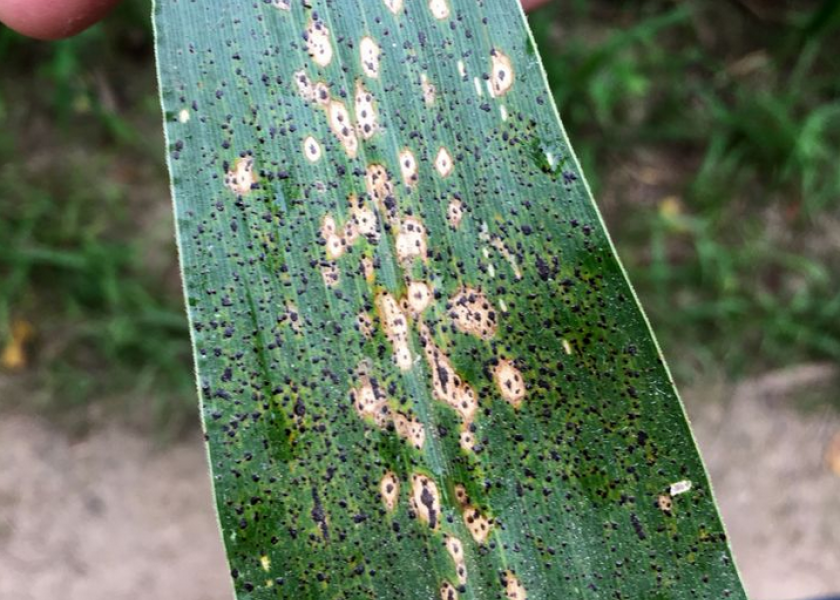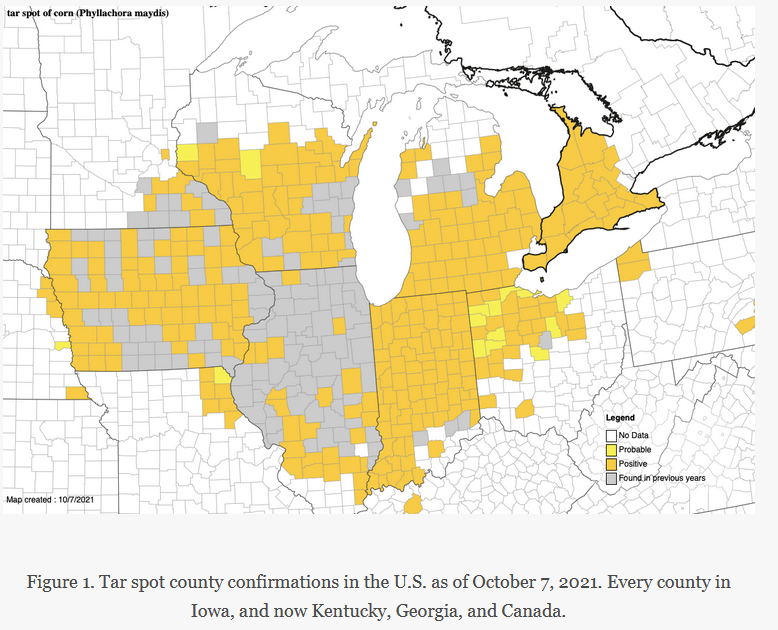Tar Spot 2022: Get Ready for a Lion, Hope for a Lamb

A firestorm of high humidity, rainfall and fog rolled together and helped Mother Nature deliver a tar spot gut punch to corn in many south-central Michigan fields last summer.
“We knew it could hit crops and easily take out 50 bushels an acre, but to watch it physically kill a crop in like a three-week timeframe, that made me step back. I was like, ‘Oh, my goodness, this is bad.’” says Missy Bauer, Farm Journal Associate Field Agronomist and owner of B&M Crop Consulting, Coldwater, Mich.
Bauer says as she drove by tar spot affected fields, the initial signs of the disease were frost-like tinges on the maturing plants.
“You’d see that the first week, the next week, it’d be a little worse, and then the third week it would be dead,” she recalls. “We saw a lot of corn dead right around Labor Day.”

Since 2015, tar spot has expanded its footprint from Illinois and Indiana westward to Nebraska, south to Georgia and Kentucky, and eastward to Pennsylvania, according to Damon Smith and Roger Schmidt, University of Wisconsin-Madison.
In Bauer’s area, irrigated corn acres took it on the chin the most, with 100-bushel-per-acre losses not uncommon, and some fields were just a total loss.
“If you did everything right, like you put on your fungicide, it was the right product and the right timing, you were probably OK in dryland corn. But if it was the wrong hybrid and under water, it was not good,” she adds.
While Bauer was taken back by the disease severity, she was not surprised it occurred. “The weather data really told us this was going to happen. The charts were screaming at us as we tracked the humidity levels,” she says. “Tracking humidity is going to be a big part of how we’ll keep an eye on it again this year,” she adds.
Fungicides Can Help
Hybrid selection and field placement are also key considerations for 2022, though there is no known hybrid totally resistant to the disease.
Bauer adds she won’t plant any hybrids under pivots that don’t have a good rating for tar spot.
Her recommendation to farmers who have high-pressure, at-risk fields is to go with a planned two-pass approach with fungicides.
“We're still trying to figure out the exact timings for those, whether we'll go with an application at a late V stage or right at tassel (VT), but it will be one of those two timings,” she says. “Then we'll come back at R3 or R4, depending on how fields look and where the tar spot is at that point.”
In dryland corn, Bauer recommends a planned, one-pass fungicide application. “But if we're planting a hybrid that we know is a little weaker, even in dryland corn on beans, we will go back to a two-pass approach.”
After that, Bauer says what happens is up to Mother Nature. If the weather is dry or the disease shows up late in the season, tar spot is unlikely to be the monster it was in 2021. But that remains to be seen.
“There’s plenty of inoculum out here,” Bauer says. “You can probably still go out in some of these fields and see residue there that’s covered with black specks, especially the leafy tissue. It's just whether we're going to have the conditions this season to really get it going again or not.”
Tar Spot Found In New States, Severe Infestation Slashes Yield
Farmers Faced with Yields Cut in Half, Missy Bauer's 3 Tips to Salvage Fields Tormented By Tar Spot
Ferrie: Tar Spot is ‘Causing the Wheels to come off the Bus’
Ferrie: Severe Tar Spot is Shutting Down Corn, Encouraging Top Leaf Dieback







